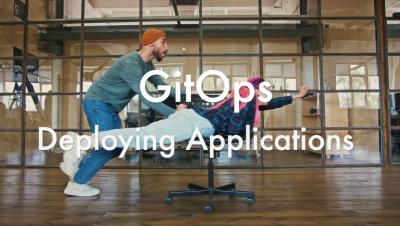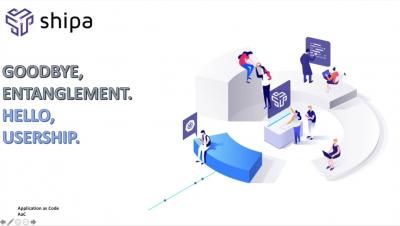Operations | Monitoring | ITSM | DevOps | Cloud
Shipa
Shipa Application as Code Product Overview
GitOps Workshop - Deploying Applications
GitOps is one method used by teams to deploy microservices, but challenges usually arise when deploying applications across multiple clusters and environments. For your GitOps initiative to be successful, you should consider implementing an application operating model. In this second workshop we covered.
GitOps Beyond Kubernetes
The idea to fully manage applications, in addition to infrastructure, using a Git-based workflow, or GitOps, is gaining a lot of traction recently. We are seeing an increasing number of users connecting their Shipa account with tools such as ArgoCD and FluxCD. Based on that, we conducted multiple user interviews to understand some of the challenges teams face when implementing GitOps, especially those introduced or faced by their developers.
Adding a Developer Portal to FluxCD
The idea to fully manage applications and infrastructure using a Git-based workflow, or GitOps, is gaining a lot of traction recently. We are seeing more and more Shipa users adopting GitOps as the cloud-native deployment methodology. While it is no secret that ArgoCD and FluxCD are by far the most used tools today, we see FluxCD users trying to address the challenges below.
Shipa Cloud Release 1.3.6
Shipa is designed to make it simple for developers to run their code on Kubernetes without having to know Kubernetes and for platform engineers to enforce controls and policies.
DevOps, NoOps and Open Source with Daniele Fontani
GitOps workflow with ArgoCD, Crossplane, and Shipa
GitOps Workshop
On August 11th, 2021, we conducted a workshop to discuss implementing a GitOps workflow using ArgoCD, Crossplane, and Shipa. We were overwhelmed by the hundreds of people who registered for the session. We believe it shows a few important challenges have to be solved for GitOps to become mainstream across different enterprises. While GitOps brings many benefits, we often see teams facing challenges.
AppOps - Defining a new category
Virtualization and cloud have forced the need for automation. In the “old” days, it would take weeks for a new physical server to arrive. There was little pressure to install and configure the operating system on it rapidly. We would insert a disc into the drive and then follow our checklist. A few days later, it would be ready to use. But the ability to spin up new virtual machines (VMs) in minutes required us to get better at automating this process.










